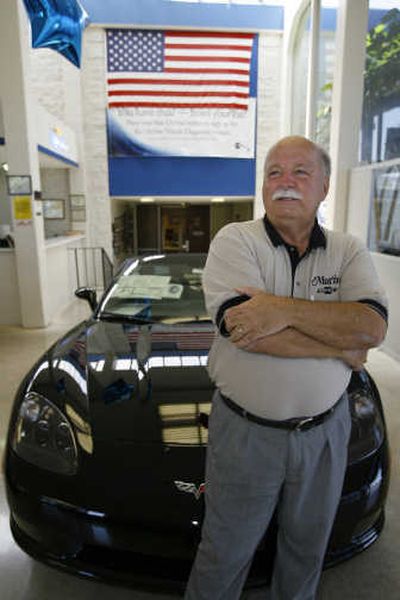U.S., Japanese carmakers meet in the middle

DETROIT — Just a few miles from Toyota’s U.S. sales and marketing headquarters, George Tasker hasn’t had much luck selling mid-sized Chevrolets against Toyota’s Camry, the most popular car in America.
But Tasker, the top salesman at Martin Chevrolet in Torrance, Calif., is looking forward to November when the new Malibu arrives in his showroom.
“It’s been difficult for a while,” said Tasker, whose dealership near Los Angeles is in the middle of a market that’s a Japanese stronghold. “We look forward to the battle, actually, with a product that we feel is going to be strongly competitive with their vehicle.”
The sleek-looking Malibu is a critical product for General Motors Corp. as U.S. automakers try to woo back customers they lost by neglecting the mid-sized car category and focusing too much on high-profit trucks and sport utility vehicles. The Malibu and the new 2008 Honda Accord are signs of renewed competition in the largest segment of the U.S. car market.
That means consumers will see more standard features, higher quality cars, stable if not falling prices, and models coming out at a faster pace, said Erich Merkle, vice president of forecasting for auto consulting company IRN Inc. in Grand Rapids.
“They’re all trying to pack them with features,” he said. “It’s incredibly competitive. That competition is just providing greater value to the consumer. Over the next two years, you’re going to be getting more for less.”
To Merkle and others, the Malibu is Detroit’s best shot at busting up control of the mid-sized segment by Toyota Motor Corp. and Honda Motor Co. The new car has a modern, rounded look and an array of engines and transmissions that GM says are far smoother than the Camry’s with comparable or better fuel economy. Merkle says the fit and finish, as well as the interior, are gorgeous.
“We simply see it as the best chance we’ve had in years to take on the two dominant Asian players,” Bob Lutz, GM’s vice chairman of global product development, said in an e-mail to the Associated Press. “It’s the best mid-market front-wheel-drive we’ve ever done.”
It wasn’t that long ago that Detroit dominated in mid-sized cars. In 1990, U.S.-based automakers controlled almost 70 percent of the market, thanks in large part to the popularity of the Ford Taurus, according to data collected by Ward’s Automotive Group. But since then, Honda, Toyota and Nissan Motor Co. have gradually increased market share, overtaking the Detroit Three in 2005 with 47 percent of the market. Detroit’s share dropped to just under 45 percent that year and has continued to decline.
The Camry became the top-selling car in the U.S. in 1997 and has held the honor every year since except for 2001, when Honda’s Accord was the winner. The last U.S.-brand car to win the segment was the Taurus in 1996.
U.S. consumers love the Camry, buying 448,445 of them last year and 282,044 through July of this year due largely to its reputation for quality and reliability.
The Camry, revamped for the 2007 model year, controls more than 16 percent of the mid-sized U.S. car market, according to Ward’s. The Accord is second with 354,441 sales.